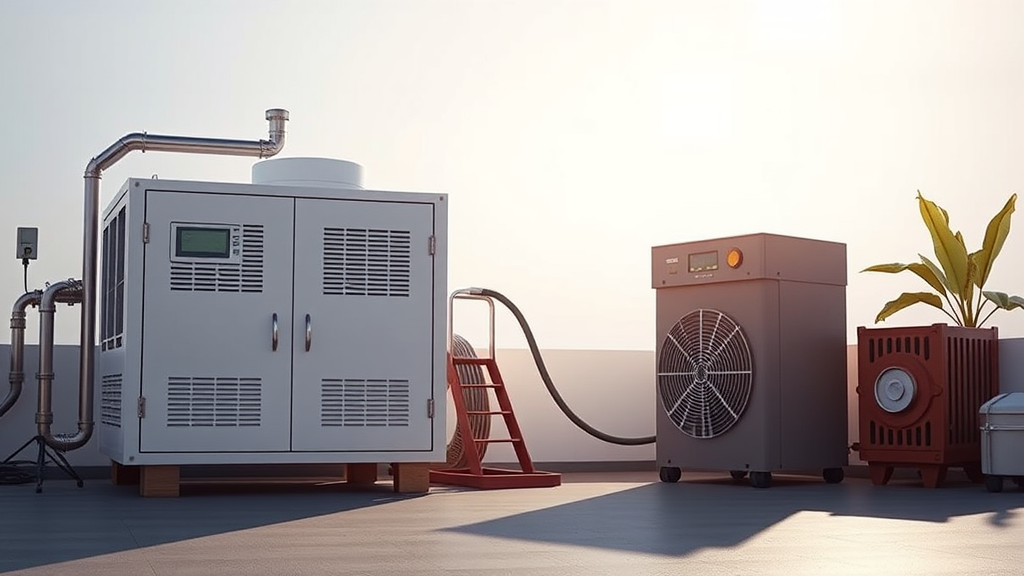Physical Address
304 North Cardinal St.
Dorchester Center, MA 02124
Physical Address
304 North Cardinal St.
Dorchester Center, MA 02124

Pure sine wave inverters generate electrical signals that closely mimic the smooth, consistent waveform of standard utility power. Unlike modified sine wave alternatives, these inverters create a perfectly curved electrical output that provides optimal performance for complex electronic devices. The technology involves sophisticated electronic components that carefully manipulate electrical signals to produce a clean, consistent wave pattern.
The signal generation begins with DC power input from sources like batteries or solar panels. Internal electronic components rapidly switch the direct current, creating a smooth alternating current output. This process involves multiple stages of electronic manipulation, including:
Pure sine wave inverters offer remarkable benefits for various applications. They provide clean power that protects sensitive electronics from potential damage caused by irregular electrical signals. Medical equipment, professional audio systems, and advanced computing devices particularly benefit from the smooth power delivery.
| Parameter | Pure Sine Wave Performance |
|---|---|
| Harmonic Distortion | Less than 3% |
| Efficiency | 90-95% |
| Voltage Regulation | ±1-2% |
Professional engineers design pure sine wave inverters with multiple protection mechanisms. These include:
The technology finds extensive use in diverse fields, including:
Ongoing research continues to improve pure sine wave inverter technology. Emerging innovations focus on increasing efficiency, reducing size, and enhancing overall performance for more demanding electrical applications.
For more information, visit these related resources:
Solar Energy Resources |
Power Electronics Research
The fundamental design of pure sine wave inverters involves intricate electronic components that meticulously convert DC power into a seamless, sinusoidal waveform. Unlike modified sine wave inverters, these sophisticated systems utilize advanced semiconductor switching mechanisms to generate electricity with minimal harmonic distortion.
Pure sine wave inverters distinguish themselves through remarkable electrical performance metrics. They produce electricity with less than 3% total harmonic distortion, ensuring compatibility with sophisticated electronic devices that demand pristine power quality.
| Performance Parameter | Specification Range |
|---|---|
| Voltage Regulation | ±1-2% |
| Frequency Stability | 59.5-60.5 Hz |
| Efficiency Rating | 90-95% |
The conversion process involves multiple sophisticated stages. Initially, DC power enters through input terminals, where power transistors rapidly switch to create a pulse-width modulated signal. This signal then undergoes precise filtering and transformation, generating a clean sine wave output indistinguishable from standard electrical grid power.
Modern pure sine wave inverters incorporate microprocessor-based control systems that continuously monitor and adjust electrical parameters. These intelligent systems can instantaneously respond to load variations, maintaining consistent voltage and frequency across diverse application scenarios.
These inverters find critical applications in multiple domains:
Pure sine wave inverters offer exceptional reliability through robust thermal management and intelligent protection circuits. Advanced models incorporate features like overload protection, short-circuit prevention, and temperature-based performance optimization.
Engineers and technical professionals assess these inverters based on comprehensive performance parameters including:
Manufacturers like Schneider Electric and Victron Energy continue pushing technological boundaries, developing increasingly sophisticated pure sine wave inverter solutions that meet evolving power conversion requirements.
Emerging research focuses on enhancing semiconductor technologies, improving conversion efficiencies, and developing more compact, lightweight inverter systems capable of handling increasingly complex power management challenges.
Pure sine wave inverters represent a remarkable technological advancement in power conversion, offering unparalleled electrical signal quality and reliability. By transforming DC power into a smooth, consistent AC waveform, these sophisticated devices have revolutionized how we manage electrical energy across multiple applications.
The intricate design of pure sine wave inverters ensures that sensitive electronic equipment receives clean, stable power that closely mimics utility grid electricity. From advanced medical devices to sophisticated computer systems and high-end home appliances, these inverters provide a critical solution for maintaining optimal performance and preventing potential damage caused by irregular power signals.
As technology continues to evolve, pure sine wave inverters will likely become even more efficient and compact. Their ability to generate precise electrical signals with minimal harmonic distortion makes them an essential component in renewable energy systems, mobile power solutions, and emergency backup power configurations.
For consumers and professionals alike, understanding the technical nuances of pure sine wave technology represents more than just technical knowledge—it’s about ensuring reliable, high-quality power delivery in an increasingly electricity-dependent world. The advanced components and sophisticated signal generation mechanisms demonstrate how electrical engineering can create solutions that are both technically elegant and practically transformative.
Investing in pure sine wave inverters is not just a technological choice, but a strategic decision to protect sensitive electronics, maximize energy efficiency, and ensure consistent power performance across diverse environments. As our reliance on electronic systems grows, these inverters will undoubtedly play an increasingly critical role in powering our modern technological landscape.
Check out one of the top rated batteries & inverters here – https://www.healthrefreshed.com/charge-controllers-inverters